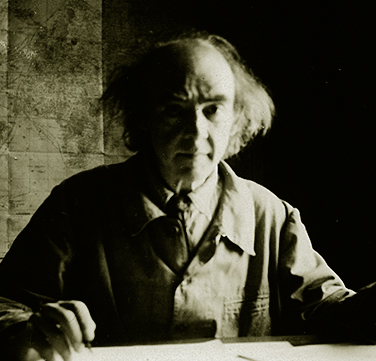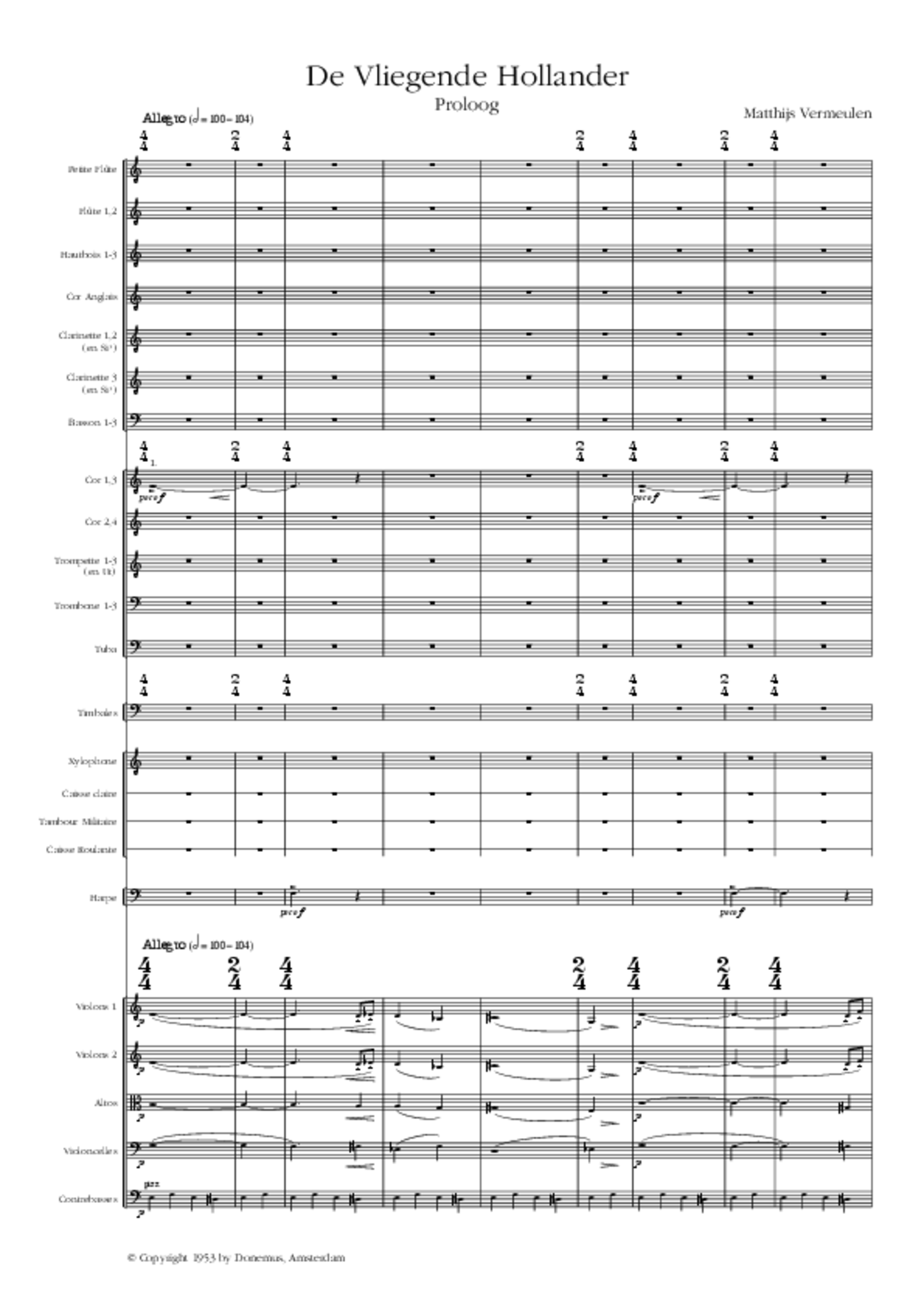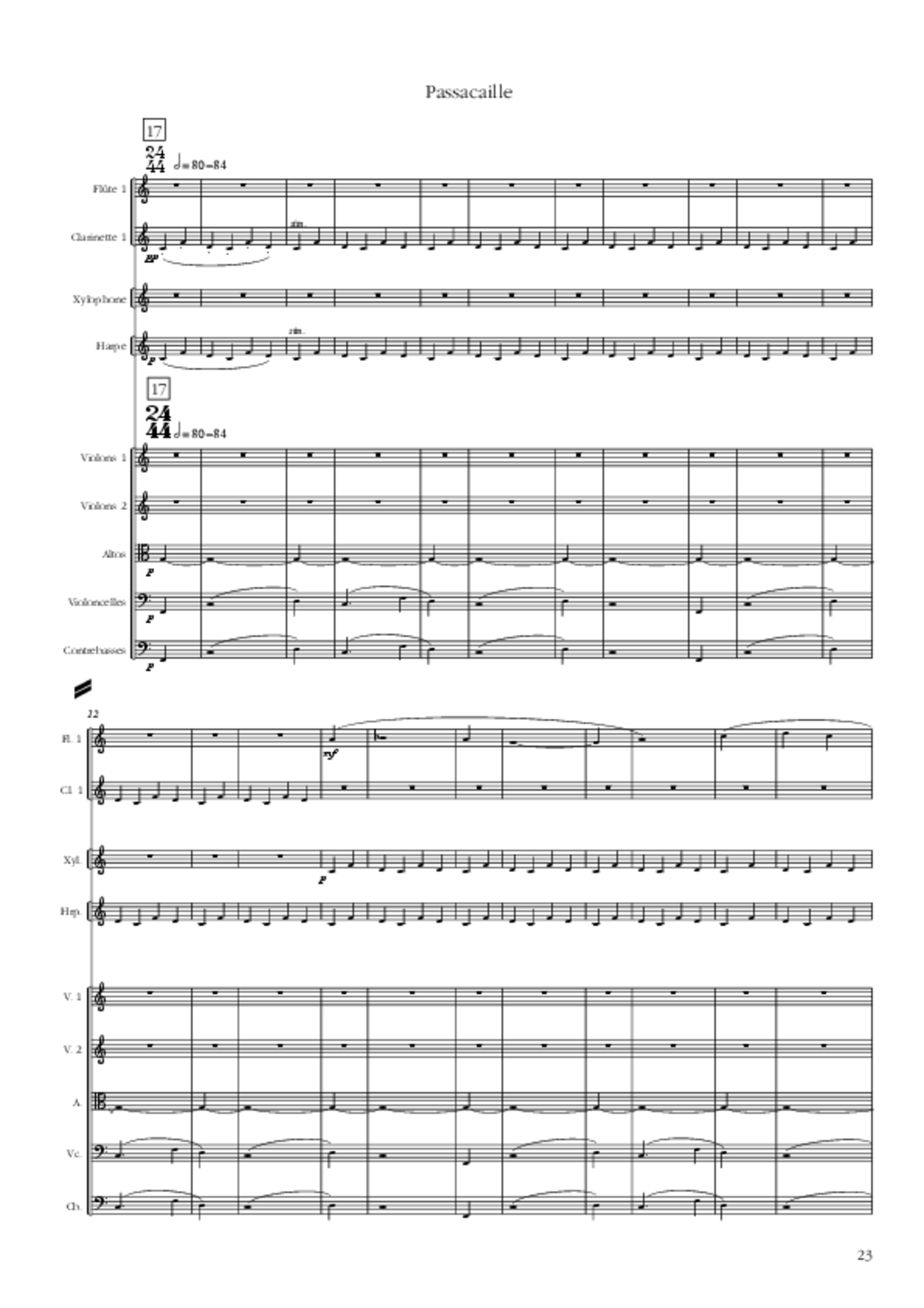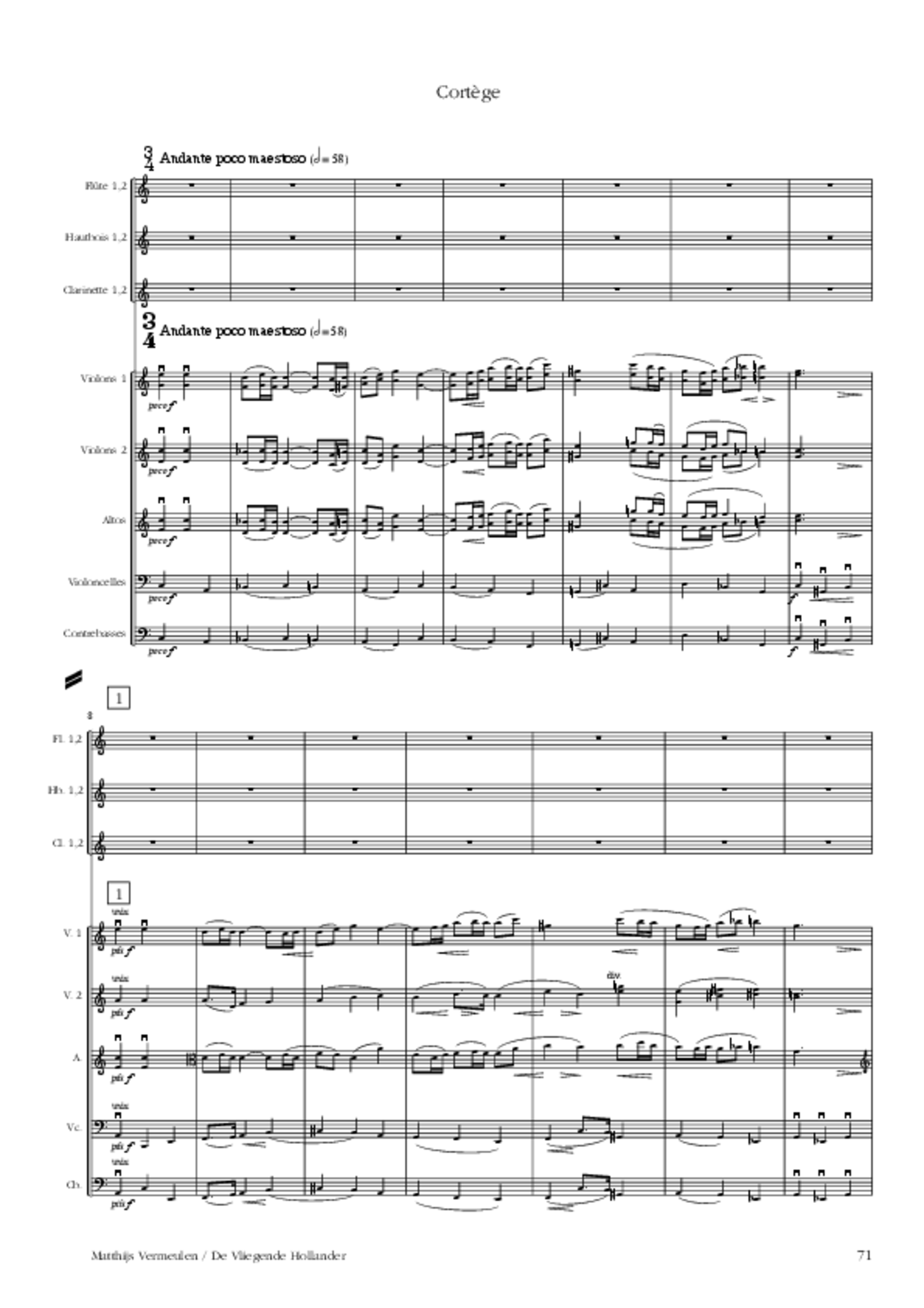MATTHIJS VERMEULEN
Componist, schrijver en denker

De Vliegende Hollander
Vermeulen wrote this music for the open-air play De Vliegende Hollander with which the 355-year existence of Leiden University was celebrated in June 1930. The book for the play was written by Martinus Nijhoff, who wove the legends of the Flying Dutchman and the Wife of Stavoren with the historical fact of St. Bonafacius' preaching in the Northern Netherlands. The tight schedule of the production resulted in Vermeulen's contribution remaining confined to the musical framing of Nijhoff's prologue and the accompaniment of a short liturgical Easter play that the poet had designed in the second act following the tradition of the so-called Quem quaeritis-dialogues. For this Vermeulen made an arrangement of the Gregorian chants Victimae paschali laudes and Haec dies quam fecit Dominus.
The music for the prologue takes the form of three movements. The softly beginning introduction (Allegro) illustrates the first morning activity on the pier of the harbour with horn and trumpet signals. As musical background for the monologue in which the admiral Hollander tells his life history to the tower watcher and speaks of his mystical relationship to the sea, Vermeulen composed a Passacaille. A melody repeated 58 times represents the permanent motion of the waves. In his programme notes Vermeulen says: "As it is among the most basic properties of Music (the property from which she borrows her magic for a great deal) to transpose a given subject that serves as a starting point, from the particular to the more common, the composer was compelled to treat Hollander as allegory, as symbol. The symbol of our country, of our nation, of our attitude to the Sea, of our reactions upon her presence, of the inexorable, manifould enchantment which she sends upon us, of the colours with which she tinged our psychological spectrum, of the speed to which she pushed us." The Passacaille concludes with sailor songs, alternating with hymns of the inhabitants of the town - the only sung pieces of the original score. The third movement follows: the Cortège as accompaniment of the solemn entrance of the sovereign Edwarda who - in the first act - sends her fleet out to acquire new richness and by doing so initiates the dramatic events.
After the nearly failed performance of 1930 on the Kager Lakes (the music, which was recorded in Paris on grammophone, was reproduced on the waterfront by a powerful sound system, but was inaudibly blown away with the wind) Vermeulen preferred to render his score in the concert hall without declamation and singing, as an autonomic composition. He regarded the three movements of the prologue as "a symphonic unity". In the beginning of the 1950s he arranged a photocopy of the manuscript according to that idea by masking the spoken word and the vocal parts. He also removed a repetition at the close of the Passacaille (from rehearsel number [58] onwards).
The 1997-edition (Donemus Amsterdam) follows this revised score from the Vermeulen-archives. The interlude from the second act is rendered according to the original manuscript that remained in the possession of the Leidsch Studenten Corps (now in the Lakenhal, Leiden). For the naming of the movements the more recent usage Proloog, Passacaille, Cortège has been followed.


